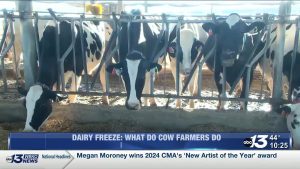The Veterinary University Training and Research Centre (VUTRC) in Tirupur district is about to embark on a project to reduce the calving interval of Kangayam cows.
Kangayam cows normally have a calving interval of 16 months.
The doctors at the institution want to offer hormone (progesterone) therapy to the cattle using NABARD funding, which might shorten the calving interval by two to three months.
“The Kangayam cattle breed is noted for its performance in farming, VUTRC assistant professor Dr. U Lakshmikantan told. As Korangadu land (traditional grazing ground) became scarce, numerous farmers were compelled to graze their cattle in cramped quarters. With this difficulty, the farmers face an extra burden when the cow breeds have anestrus condition which is also known as repeated failure to conceive.”
Because maintaining Kangayam livestock is now an expensive endeavor, numerous farmers are being compelled to sell the cows at a loss.
The calving interval of 16 months might be reduced to 13 to 14 months with the help of hormone therapy.
“This therapy will result in increased calving, which will boost productivity. Similarly, producers may receive at least two extra calves during the cattle’s lifecycle “He explained.
About Kangayam Cows
The Kangayam or Kangeyam is an Indian breed of draught cattle from the South Indian state of Tamil Nadu. Its area of origin is the region surrounding kangayam Nadu (a division of Kongu Nadu), but it is spread across a much wider area. The name of the breed derives from the town of Kangeyam. It is also known as Kanganad or Kongu.

















